What Are Pallet Feet? A Complete Guide to Smarter Warehouse Storage
In the fast-paced world of warehousing and logistics, storage systems play a critical role in maximizing space and improving the efficiency of operations. One often-overlooked yet highly effective solution for improving warehouse storage is the use of pallet feet. These small components are designed to provide a stable, elevated base for pallets, making them essential for organizing and storing goods safely and efficiently.
This guide will explore the importance of pallet feet, their operation, and why they are essential for efficient warehouse storage. Whether you are setting up a new warehouse, optimizing an existing one, or looking to improve your pallet storage systems, understanding the role of these products can help you make the most of your storage space.
What Are Pallet Feet?
Pallet feet are small, sturdy components that are typically attached to the bottom of pallet racking systems. Their primary function is to elevate pallets off the floor, creating space beneath them for air circulation, cleaning, and easy access. Pallet feet are particularly useful in environments where hygiene is a priority or where pallets need to be raised for improved accessibility and visibility.
The feet can be designed from various materials, including metal, plastic, and rubber, depending on the specific requirements of the warehouse. They are usually adjustable to allow for height modification, ensuring that pallets can be positioned at the ideal height for storage or access.
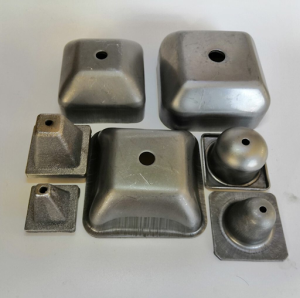
How Do Pallet Feet Work?
Pallet feet are typically fixed or adjustable components installed at the bottom corners of pallet racking or directly on the pallets themselves. They help to elevate the pallets above the ground, creating a gap between the floor and the pallet. This gap serves several important functions:
- Improved Air Circulation: Elevating pallets allows air to flow underneath them, reducing the risk of moisture accumulation and preventing the growth of mold or mildew, particularly in warehouses with humid environments.
- Easier Cleaning: By raising the pallets off the ground, cleaning the area beneath the pallets becomes much easier. This helps maintain a clean and organized warehouse, which is particularly important in industries where cleanliness is critical, such as food storage or pharmaceuticals.
- Protection from Contamination: By creating a buffer between the pallet and the ground, they help protect the stored goods from dirt, dust, and debris that may accumulate on the warehouse floor.
- Enhanced Stability: Properly installed pallet foot help distribute the weight of the pallet evenly, ensuring better stability during storage. This is especially beneficial when stacking multiple pallets or in warehouses that deal with heavy goods.
How to Use Pallet Feet Effectively?
Pallet feet are an essential component in modern warehouse and logistics operations. They offer a practical solution for elevating and stabilising various types of containers, platforms, or storage units, making them easier to move and stack. These small but sturdy supports are typically attached to the bottom of plastic or wooden pallets, bins, or crates to provide height and facilitate access with forklifts or pallet jacks.
To use them effectively, start by choosing the right type based on the weight and dimensions of your load. Some are designed to support heavy-duty industrial items, while others suit lighter goods or modular storage systems. Once selected, they can either be integrated during the manufacturing process or fitted manually using screws, clips, or snap-fit mechanisms, depending on the design.
Proper placement is crucial. Usually, four to six supports are installed at the corners and centre of the base to ensure balance and stability. Make sure they are evenly spaced to avoid tilting or tipping, especially when stacking multiple units. For added efficiency, many models are designed to be nestable, allowing for compact storage when not in use.
After installation, containers or pallets with these supports can be easily lifted using standard handling equipment. This setup not only streamlines the movement of goods but also improves airflow underneath, which is useful in certain storage environments like food or chemical storage. Additionally, raising pallets off the ground helps reduce damage caused by moisture and dirt, extending the life of both the packaging and the items inside.

Types of Pallet Feet
Pallet feet come in various types, each designed to suit specific storage needs and environments. Here are some common types:
Fixed Feet
Fixed pallet feet are attached permanently to the pallet or racking system. They are commonly used in warehouses where pallets are stored at a fixed height and don’t require frequent adjustment. Fixed feet are usually more affordable and are suitable for warehouses that don’t need adjustable height features.
- Advantages: Low cost, simple installation, stable support
- Disadvantages: Lack of adjustability, not ideal for dynamic environments
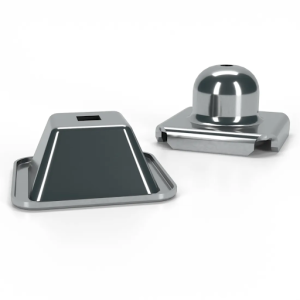
Adjustable Feet
Adjustable pallet feet offer greater flexibility, allowing the height of the pallet to be modified. This makes them ideal for warehouses with varying storage needs, or when it’s necessary to adjust the height for specific tasks such as stacking, cleaning, or maintenance.
- Advantages: Customizable height, adaptable to different needs
- Disadvantages: Slightly higher cost, may require more maintenance

Stackable Feet
Stackable pallet feet are designed for stacking pallets securely. They are often used in high-density storage systems, where pallets are stacked on top of each other. These feet help improve the overall stability and efficiency of the storage system.
- Advantages: Allows for stacking, maximizes space, highly stable
- Disadvantages: Can be bulkier, requires more space to store
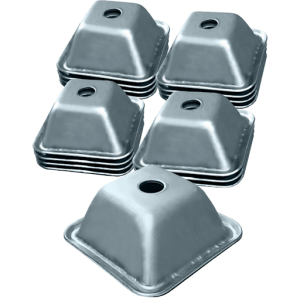
Heavy-Duty Pallet Feet
Heavy-duty pallet feet are designed for use with pallets that carry particularly heavy loads. These feet are typically made of durable materials like steel and are capable of supporting large quantities of goods without compromising on safety or stability.
- Advantages: Suitable for heavy loads, provides extra support
- Disadvantages: Higher cost, may not be necessary for lighter loads
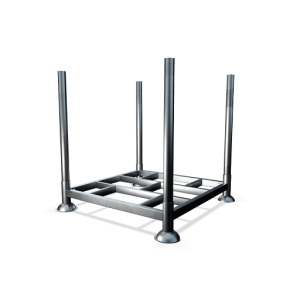
Plastic and Rubber Pallet Feet
Plastic and rubber feet are commonly used in lighter-duty applications. They offer protection for the floor and the pallets themselves. Rubber feet also provide some cushioning and anti-slip benefits, making them ideal for environments where vibrations or impacts might occur.
- Advantages: Protects floor surfaces, anti-slip, cushioning
- Disadvantages: May not be suitable for heavy loads, less durable than metal feet
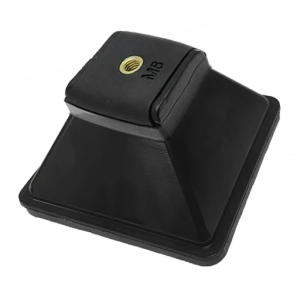
Why Are Pallet Feet Important for Smarter Warehouse Storage?
Maximising Warehouse Space
In a warehouse, space is often limited, and optimizing every square inch is critical. Pallet feet help maximize vertical storage by allowing pallets to be stacked efficiently while maintaining a stable and organized structure. The ability to create a gap under each pallet also ensures that goods can be accessed easily and quickly, improving workflow efficiency.
Improved Inventory Management
Having pallets elevated with pallet feet helps in the proper organization and tracking of inventory. It allows for better space management and access to the stored goods, ensuring that your stock is well-arranged and easy to retrieve. This can be particularly beneficial in environments where goods are moved frequently or require quick access, like distribution centers or retail warehouses.
Enhanced Durability of Goods
Storing pallets directly on the warehouse floor can expose them to various environmental factors, such as moisture, dirt, or debris, which can damage the goods over time. Elevating the pallets minimises these risks, ensuring that the items remain protected throughout storage.
Safety and Compliance
Pallet feet help improve warehouse safety by ensuring that pallets are stored securely. In some industries, there are strict safety regulations regarding how goods should be stored, particularly when dealing with hazardous materials or products that need to be kept at specific heights for safety reasons. Pallet feet can play a crucial role in meeting these regulatory requirements.

How to Choose the Right Pallet Feet for Your Warehouse
Choosing the right pallet feet depends on several factors, including the type of goods being stored, the weight of the pallets, and the specific needs of your warehouse. Here are some key considerations when selecting:
Weight of the Pallet
For lighter loads, plastic or rubber pallet feet may suffice. However, for heavier pallets or bulk storage, heavy-duty metal feet are essential to ensure proper support and stability.
Flexibility and Adjustability
If your warehouse operations require flexible storage configurations, adjustable pallet feet are a good choice. They allow you to modify the height of the pallets as needed, providing more versatility in storage options.
Floor Type
The type of floor in your warehouse also plays a significant role in selecting the right pallet feet. For example, if you have concrete floors, rubber pallet feet can help prevent damage to the surface. If you have smooth, polished floors, rubber feet can also reduce the risk of slipping.
Environmental Factors
Consider the environment in which your pallets will be stored. If you work in a humid or wet environment, you may want to choose a pallet foot made from materials resistant to corrosion, such as plastic or coated metal.
Kirmell Products: Reliable Pallet Feet for Smarter Storage Solutions
When it comes to optimizing warehouse storage, Kirmell Ltd offers a range of pallet feet designed to meet the diverse needs of various industries. Our pallet feet solutions are ideal for both light-duty and heavy-duty applications, providing the durability and flexibility required to handle different types of weight.
Kirmell Ltd offers reliable, long-lasting feet—adjustable for flexibility or heavy-duty for larger pallets. They maximise space, improve access, and keep goods stable.
Benefits of Using Pallet Feet in Warehouse Storage
- Increased Storage Capacity: They allow pallets to be stacked efficiently and help maximize vertical storage.
- Improved Organization: The elevation creates a more organized and accessible storage area.
- Enhanced Protection: They protect both the goods and the warehouse floor from damage.
- Cost-Effective Solution: They offer an affordable way to improve warehouse efficiency without the need for expensive storage systems.
Conclusion
Pallet feet are an essential tool in any warehouse that values efficiency, organization, and the longevity of stored goods. By elevating pallets off the floor, they improve airflow, protect goods from contamination, and maximise storage space. This makes them an invaluable asset for smarter warehouse storage.
By understanding the different types and their applications, warehouse managers can make informed decisions about how to improve storage systems, optimize space, and enhance efficiency. Whether you’re looking to protect delicate goods, increase accessibility, or meet safety standards, they provide an effective solution.
FAQs
What are pallet feet, and why are they important for warehouse storage?
How do pallet feet improve warehouse storage efficiency?
What are the different types of pallet feet available?
What is the role of pallet feet manufacturers and suppliers in warehouse solutions?
How do stackable pallet feet contribute to warehouse organization?
Can pallet feet be used in automated warehouse storage solutions?




Leave a Reply
Want to join the discussion?Feel free to contribute!